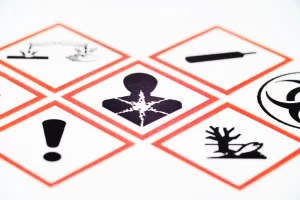The Workplace Hazardous Materials Information System (WHMIS) is a thorough programme created to make sure that employees have access to the knowledge they need to handle hazardous products safely. To ensure that employees are aware of the risks connected with the materials they handle and are able to take the appropriate steps to protect themselves and their coworkers, effective WHMIS communication in the workplace is crucial.
There are several ways that WHMIS GHS can be effectively communicated in the workplace:
- Training: WHMIS requires that employers provide education and training to workers on the hazards associated with the materials they use, as well as safe handling, storage, and disposal procedures. This training should be provided to all workers who may be exposed to hazardous materials, including new employees, temporary workers, and contractors. Training should be provided in a language and format that workers can understand, and should be documented to ensure that workers have received the necessary information.
- Labels: WHMIS GHS requires that all hazardous materials be labelled with specific information, including the product name, supplier identification, hazard pictograms, signal words, and precautionary statements. Labels provide a quick reference to the hazards associated with the material and the necessary precautions to take. Employers should ensure that labels are clearly visible and legible, and that workers understand the meaning of the pictograms and signal words.
- Safety Data Sheets (SDS): An SDS is a detailed document that provides information on the properties of a hazardous material, including its physical and chemical properties, potential health hazards, safe handling, storage, and disposal procedures. WHMIS requires that SDSs be provided for all hazardous materials used in the workplace, and that they be available to workers who may be exposed to the material. Employers should ensure that SDSs are readily accessible to workers and that workers understand how to read and interpret them.
- Posters and Signs: Posters and signs can be used to reinforce the information provided through labels, SDSs, and training. These can be used to highlight the hazards associated with specific materials, remind workers of the necessary precautions to take, and provide emergency contact information.
To ensure that employees are informed and ready to work safely with hazardous chemicals, effective WHMIS GHS communication in the workplace is crucial. Employers should use a variety of tools to communicate WHMIS to employees, including training, labels, SDSs, posters, and signage, to make sure that they are aware of the risks connected with the products they handle and how to operate safely. Employers are in charge of making sure that workers are properly informed and that all communication is done in a way that they can understand.




